Pigeons, Doves, Parrots, and Cuckoos of Maricopa County
Rock Pigeon Columbia livia
The Rock Pigeon is easily found in cities and urban settings, and is found everywhere in Arizona in these locations. Rock Pigeons are commonly known as the "Feral Pigeon" and are very accostomed to people. This bird was introduced into North America in the 1600s, and has rapidly grown in it's population since then. The Rock Pigeon is originally native to rocky coastal habitats where it was originally a shy bird. Some of these birds still exist today but not in North America.
Band-tailed Pigeon Patagioenas fasciata
This pigeon is a shy pigeon who inhabits forests in western North America. It is usually found in coniferous forests in the northwest, as well as oak and pine forests in the southwest. The Band-tailed Pigeon is most often found in small groups, unlike other doves and pigeons who are gregarious. It feeds on the ground eating nuts, berries, seeds, and grains and often spooks very easily. Band-tailed Pigeons are often seen perched at the tops of bare and leafless trees. This is a rather large pigeon, and is noticeably larger than the abundant Rock Pigeon (and much better looking!), especially in flight. In Arizona, this bird is found especially in mixed coniferous/aspen forests in the eastern half of Arizona as well as the northern half where there is excellent habitat. They are also found in oak and pine woodlands thoughout this range also. In Maricopa County, Band-tailed Pigeons are present annually in small numbers in Transition Zone forests consisting of pine and oak woodlands. They are uncommon to rare and aren't seen often, but do seem to prefer mixed oak and pine woodland, especially with larger oaks outnumbering the pines. Walking up to the summit of Mount Ord (Area 1) offers the best change of seeing a Band-tailed Pigeon. Other pine/oak hotspots in Area 1 (Four Peaks Wilderness, Mazatzal Divide Trail, Slate Creek Divide) are other good places to look for this large pigeon. Band-tailed Pigeons are migrants in Maricopa County, most often seen in April through May, as well as later in the summer, and through early fall.
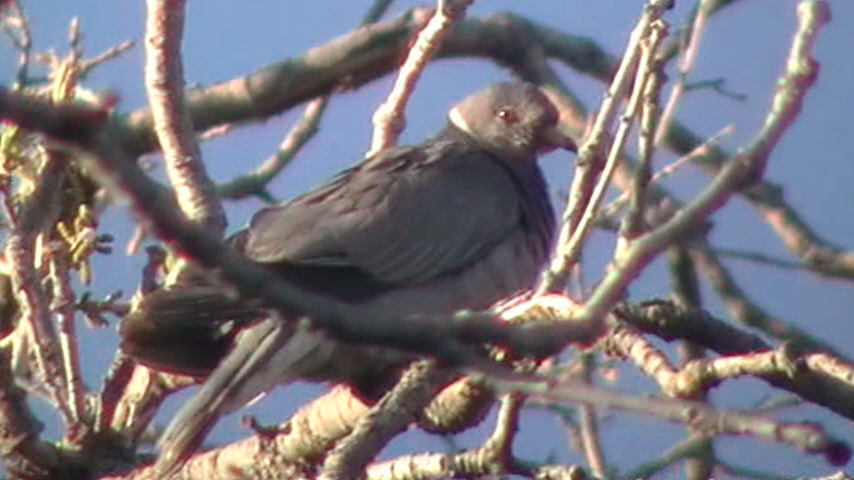
Eurasian Collared-Dove Streptopelia decaocto
The Eurasian Collared-Dove is native to Eurasia and was introduced in the Bahamas in the 1970s. From there it spread to Florida and has rapidly increased it's population in the wild to a widespread range throughout North America, especially in the Lower 48. It is found near people in urban areas, agricultural areas, some riparian habitats where there are manmade structures, and roadsides. Very common in Maricopa County.
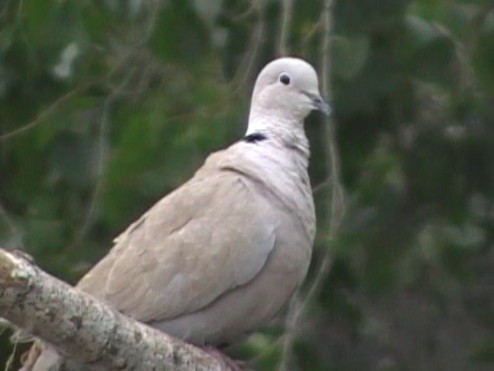
White-winged Dove Zenaida asiatica
Just like the White-winged Dove sings a song..sounds like she's singing...whoo, whoo, whoo, whoo. True to lyrics from the Stevie Nicks song, the White-winged Dove is very vocal and can often be heard singing throughout the day. This beautiful dove is found throughout the south, being more widespread in the southwest and more locally south east of Texas to Florida. It is well named, as it's cresent-shaped white wing patches are easily seen on both perched and birds in flight. The habitats that White-winged Doves are found in in Maricopa County are: dense mesquite and tamarisk forest, riparian areas in midst of deserts, and most often saguaro desert habitat. Urban areas are also a good location to see White-winged Doves. These birds are highly migratory, and most of the population is present in North America mainly from April through September before migrating south. In Maricopa County, plenty of White-winged Doves do spend the entire year, but in smaller numbers from October through March. In season, this bird is very common and is seen easily in any of the birding areas with appropriate habitat (Areas 1-13).
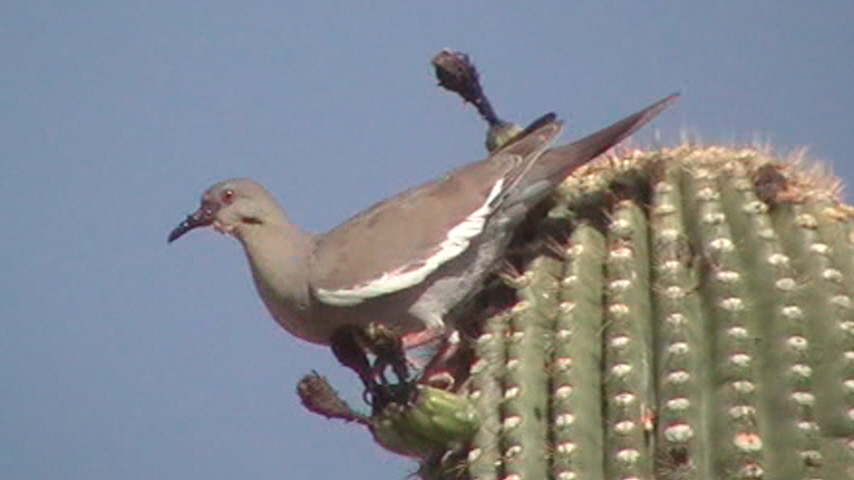
Mourning Dove Zenaida macroura
The Mourning Dove is one of North America's most abundant and common birds. It is found in a variety of habitats from low desert to high forests throughout all of the Lower 48 as well as southern Canada. It is seen in Maricopa County year round at any hotspot or area.
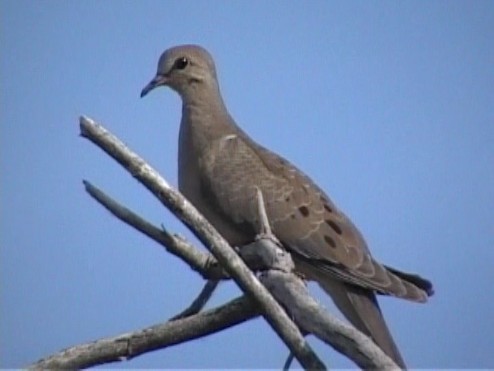
Inca Dove Columbina inca
The high two-note song of the Inca Dove is heard in deserts and urban areas of the southwest, and is most often interpreted as if the bird is singing, "no-hope". It can have plenty of different possible captions however, maybe "there's hope" or "yo-yo". This small dove is most often seen in family groups, where it feeds on the ground on seeds and grains. The Inca Dove is common in cactus and mesquite deserts, and abundant in urban settings. They are often seen huddled together in family groups for warmth. The Inca Dove has a very long tail, especially evident when the bird is in flight.
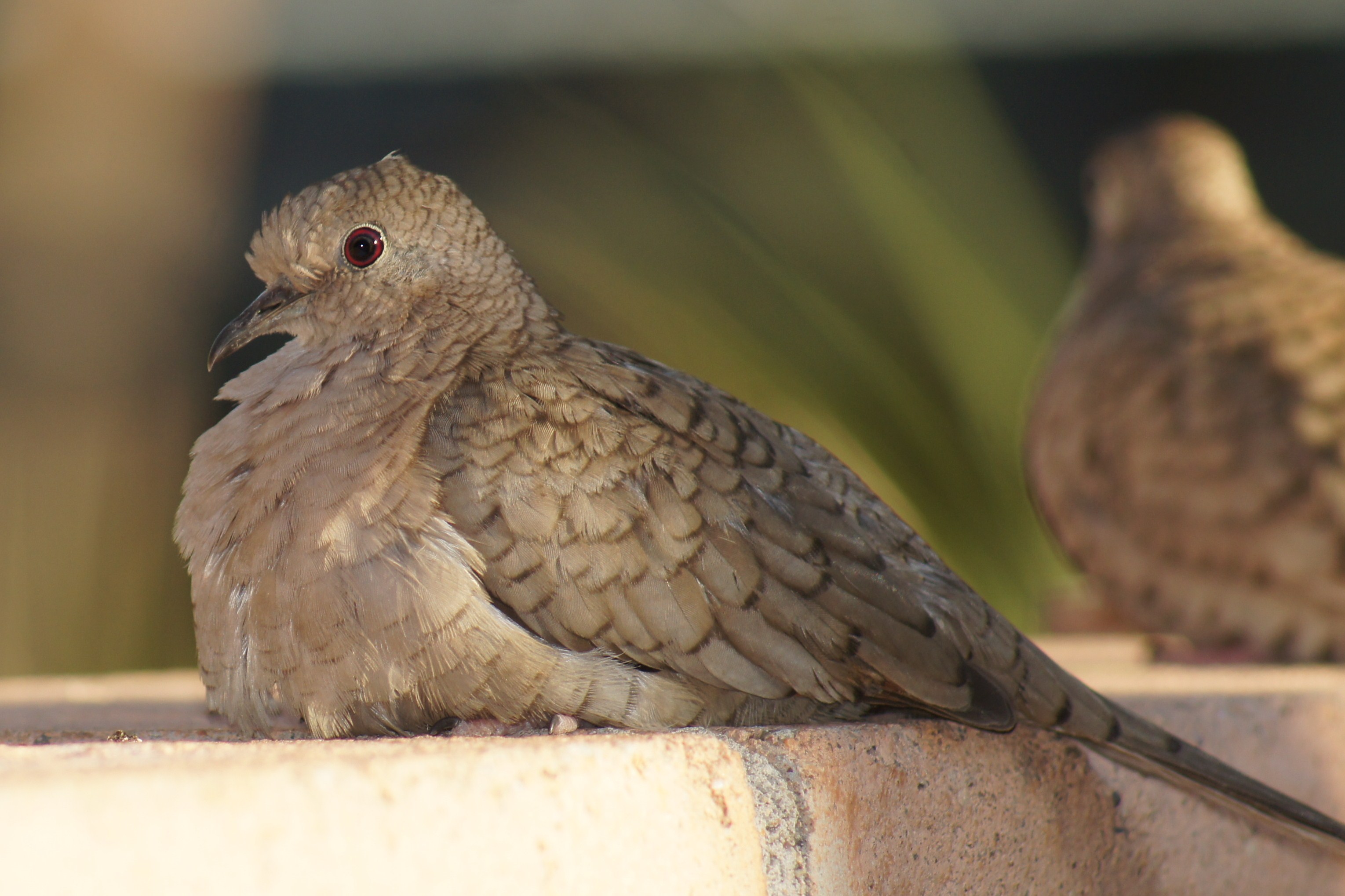
Common Ground-Dove Columbina passerina
This small and rather shy dove is seen in open areas, often at the edge of dense brushy vegetation and agricultural areas. It spends its time walking on the ground, where it feeds on seeds, grass, insects, and berries. In flight, the Common Ground-Dove is easily picked out from the slightly larger Inca Dove. It has extensive rufous on it's outer wings and a tail that is noticeably shorter than other doves, giving this dove a "mini" look. Common Ground-Doves are found year round in Maricopa County, but are very local and can sometimes be difficult to find. Area 7 (Southwest Phoenix) and Area 8 (Arlington to Gila Bend) are the best places to look. Tres Rios Overflow Wetlands (Area 7), Baseline and Meridian Wildlife Area (Area 7), and brushy areas within the extensive agricultural habitats in Area 8 are the best places to look for the Common Ground-Dove in Maricopa County.
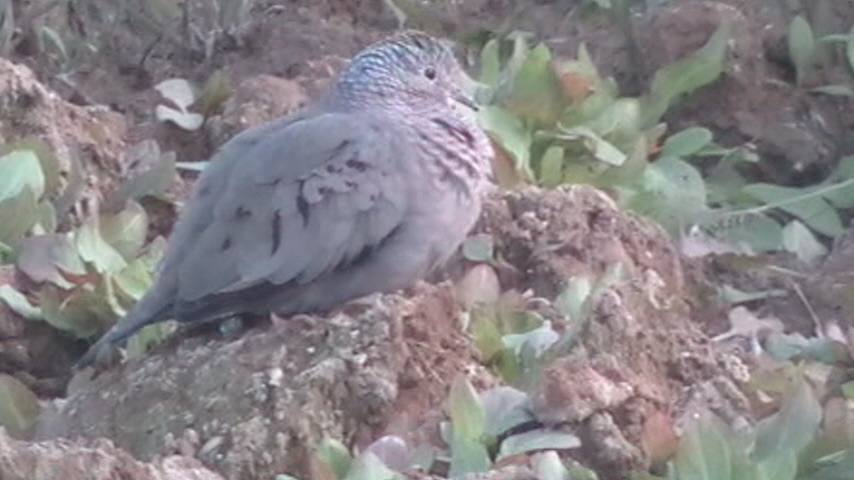
Rosy-faced Lovebird Agapornis roseicollis
Recently, the Arizona Bird Committee added the Rosy-faced Lovebird to Arizona's state list as an established exotic. This small parrot escaped from captivity and started to rapidly breed in the wild in the greater Phoenix area over the last 30 years. Numbers have grown every year and this species has become plentiful in many areas throughout the valley. Although Rosy-faced Lovebirds are easily seen throughout Phoenix, the best place to observe them is Encanto Park (Area 5). An excellent article on the Rosy-faced Lovebird Phoenix population, written by Kurt Radamaker and Troy Corman, can be found on the Arizona Field Ornithologist's website at this link here: http://azfo.org/journal/Rosy-facedLovebird2011.html
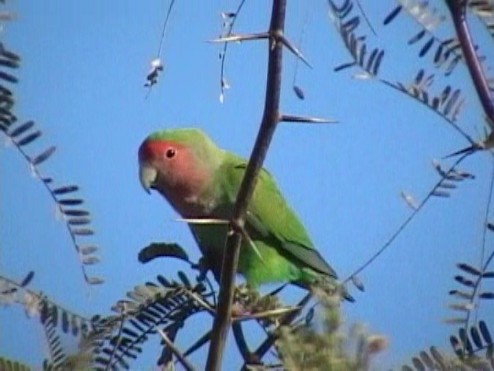
Yellow-billed Cuckoo Ceccyzus americanus
In North America, the Yellow-billed Cuckoo is one of the shortest-staying breeders, as it migrates late in spring and departs mostly by early fall. It is very widepread in eastern North America in the Lower 48, and much more limited in the west. Eastern birds are found in deciduous woodlands along rivers and streams, and birds in the southwest are found in dense riparian woodlands dominated by willows and cottonwoods. Yellow-billed Cuckoos are shy and can be very hard to find, being heard far more often than being seen. Despite it's elusiveness, this bird is very fun to see and look for, as seeing one well is a rewarding accomplishment to any birding day. The Yellow-billled Cuckoo sits motionless on concealed branches higher up in foliage for long periods of time, and slowly moves through the trees where it is never easily noticeable. Large caterpillars, insects, frogs, lizards, and berries make up much of the Yellow-billed Cuckoo's diet. As mentioned above, Yellow-billed Cuckoos are present for a short time span in Arizona, only staying to breed mainly from June through August. In Maricopa County, they prefer dense riparian woodlands, dominated by willows and cottonwoods in lush areas. Good places in Maricopa County to see and hear Yellow-billed Cuckoos are: Area 1 (Mesquite Wash, Sycamore Creek, Sunflower), Area 2 (perhaps Foxtail/Sheeps Crossing in "willow wash"), Area 3 (probably Fish Creek), Area 7 (sometimes Tres Rios Weltands and Baseline and Meridian Wildlife Area), Area 10 (Hassayampa River Preserve), and Area 12 (Box Bar and Needle Rock Recreation Areas).
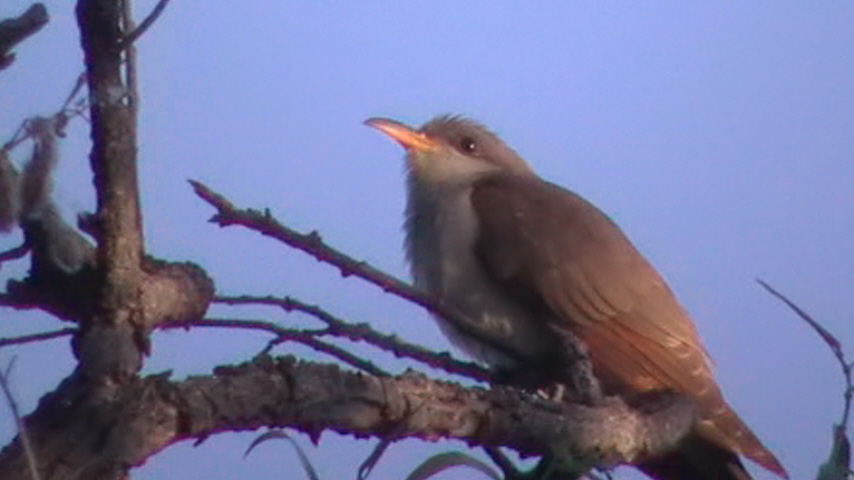
Greater Roadrunner Geococcyx californiaunus
True to it's name, this large cuckoo runs across and along roadsides regularly, and can reach up to speeds of 15 miles per hour. It is shy, and is most often seen when least expecting it's presence. For example, a birder standing in one place is likely to see a roadrunner come by at close views than when they are walking at normal pace. The roadrunner would still be viewable for a brief glimpse at much further distances. The moral is, While E. Coyote set out to get the Roadrunner, birders should wait for the roadrunner to appear instead, unlike the coyote who always failed. In Maricopa County (in Areas 1-13), the Greater Roadrunner is seen more often in deserts and riparian areas in lower elevations, but can also be found in habitats of chaparral and juniper woodlands, up to as much as 6000'. Birding in deserts offers birders a much better chance at seeing this awesome and unique species. The Greater Roadrunner is mainly a ground-dwelling bird, rarely taking flight. It feeds on an assortment of foods, including snakes, rodents, insects, and fruits. It's range in the southwest is found from California to the west to Arkansas and Louisiana on the east, where it's general habitats are open woodlands, brush, grasslands, and any arid area.
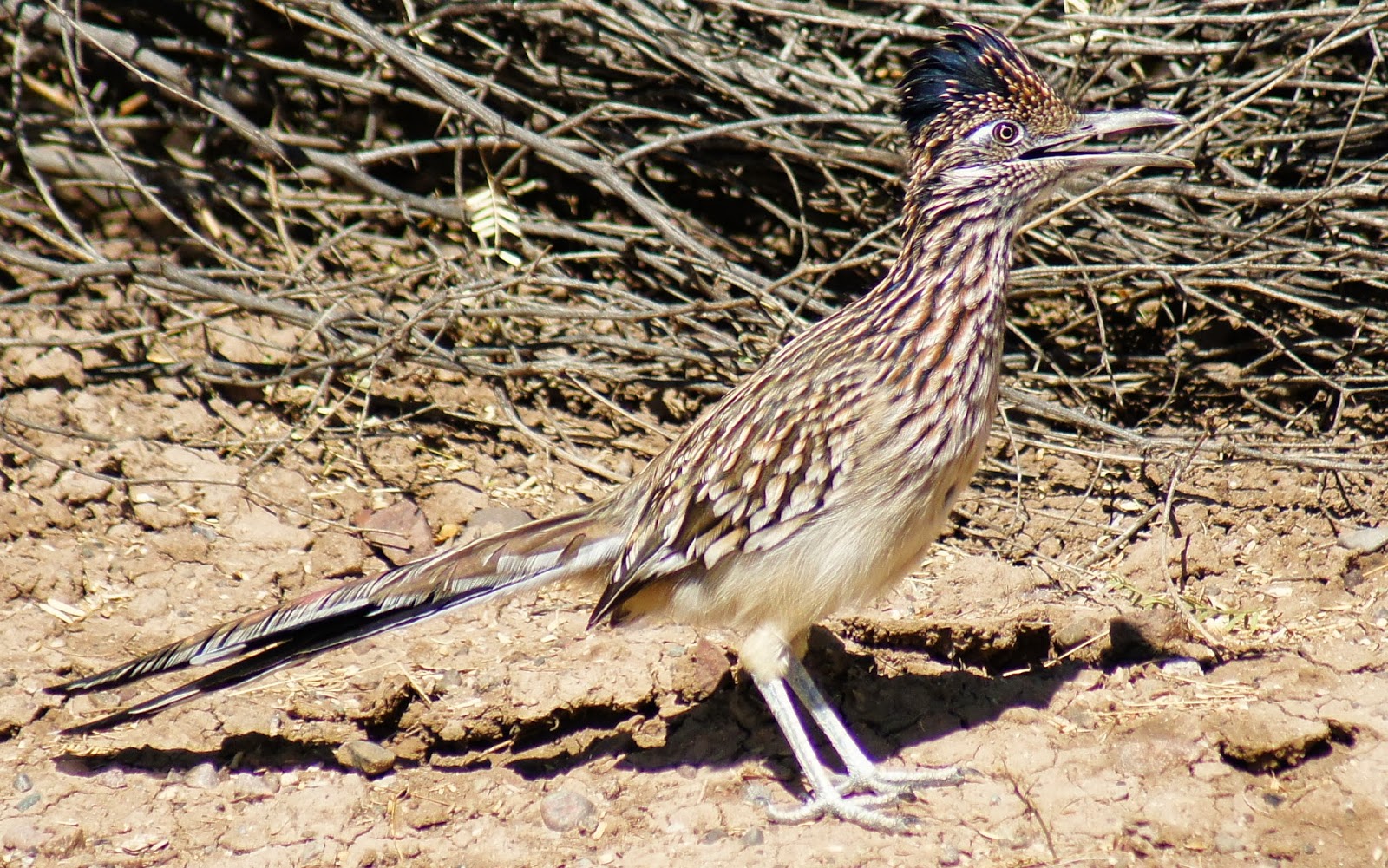
Also keep an eye out for....
Ruddy Ground-Dove Columbina talpacoti
This species is very common in Mexico, Central, and South America. It wanders north of it's range to Arizona, Texas, and California in some years with plenty of scattered records, and it may be absent north of Mexico other years. Southeastern Arizona is often a good place to see this species, and so is Maricopa County. Watch for Ruddy Ground-Doves in brushy areas with clearings (with Common Ground-Dove), farm corrals, and in grassy areas such as under mesquite bosques (perhaps with Inca Doves). Gilbert Water Ranch (Area 4) and brushy areas at field edges as well as farm corrals in Areas 7 and 8 have been locations where these doves have shown up. In Arizona, they are considered rare but usually annual.
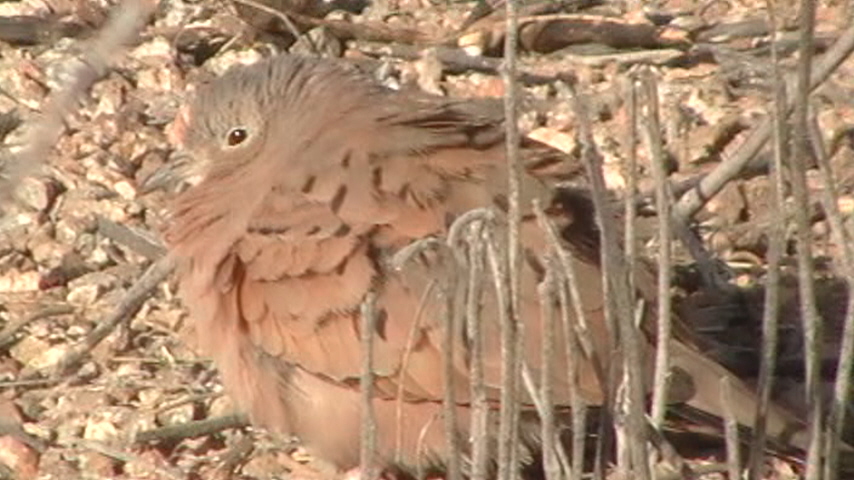
Back to What Bird Are You After? main page. |
